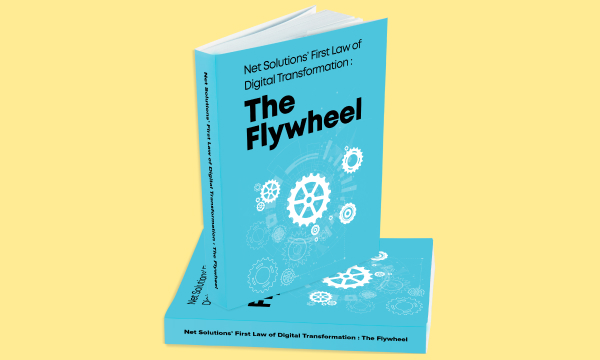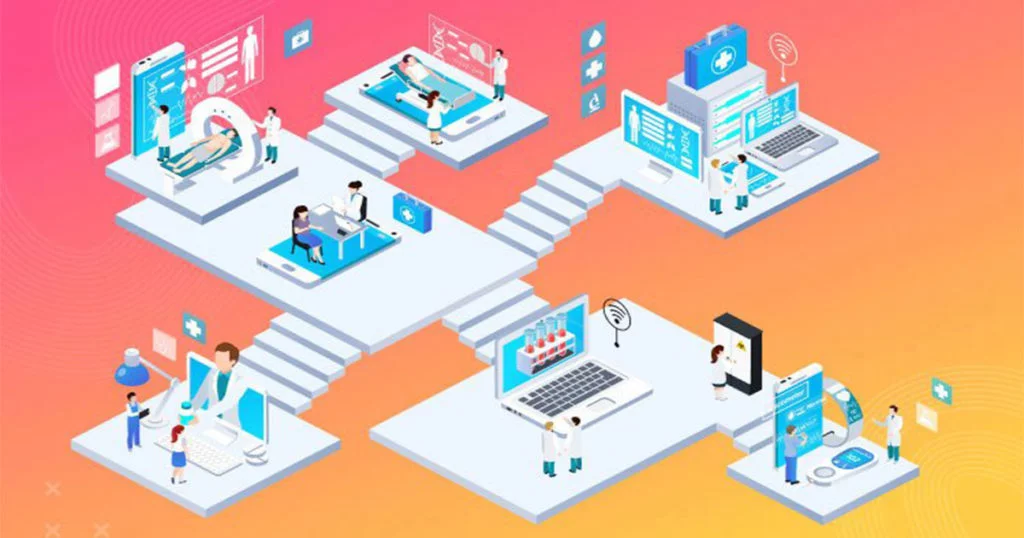Digital transformation requires balancing customer needs and costs effectively. Striking a balance between innovation and expenses offers insights into prudent cost management without compromising quality. This guide emphasizes astute cost-benefit evaluations for effective results.
A powerful digital transformation strategy is key to meeting customer needs, achieving business goals, and attaining long-term cost savings.
The benefits of digital transformation are many, which is why companies are expected to spend over $2 trillion on digital transformation this year. Those that have performed a careful cost-benefit analysis have determined that digital transformation is essential to their business’s survival and success.
Naturally, anyone considering digital transformation must weigh the upfront costs against the long-term benefits. This blog post will help you assess the costs. It will also help you take steps to manage those costs without impacting the quality of your results.
How Much Do Companies Spend on Digital Transformation?
Digital transformation offers tremendous ROI over the long haul, so companies are willing to invest quite a bit of money upfront to adopt modern digital technologies.
A recent study from International Data Corporation (IDC) found that large enterprises spend an average of $27.5 million on complete digital transformation projects. However, remember that averages can be incredibly misleading since there is so much variation from one company to another.
A giant international retailer like Walmart, with 2.3 million employees, will pay a great deal more to adopt new technologies than a company of 100,000.
The costs of digital transformation are directly related to your organization’s size and complexity, the amount of technical debt you’ve accumulated, and other key factors. We’ll explain each of them below in more detail.
The best way to assess potential costs for digital transformation is through a thorough analysis of your current systems and business needs. Once you’ve done that, you can talk to a qualified outsourcing partner who will provide an estimate based on your company’s situation.

We respect your privacy. Your information is safe.
Factors that Impact the Cost of Digital Transformation
Many factors will impact the costs associated with digital transformation initiatives and expected ROI. Setting a realistic, reasonable budget means understanding which factors have the strongest sway over the total price.
We’ve identified six factors that impact digital transformation costs. Understanding these factors is the first step toward building a budget and managing costs.
1. Organization size and complexity
Large organizations deal with massive amounts of data, serve a large user base (both internal and external), and generally require more apps to support their business processes.
Just as a massive enterprise’s IT operational costs are higher than those of a mid-size company or a startup, its digital transformation costs also tend to be higher. And while there is not always an exact correlation between organizational size and digital transformation costs, size and complexity affect the price.
For example, take Euro Car Parts, a leading car parts supplier to mechanics across the UK and Europe. This company supplies over 150,000 auto parts, and they came to Net Solutions for a complete revamping of their eCommerce UI and UX.
When transforming digital systems like that, you’re looking at revising immensely complex, interconnected software. Updating legacy systems strategically requires analysis, foresight, and expertise to ensure minimal downtime and seamless interaction between the different software in your ecosystem.
2. Legacy systems and technical debt
Legacy systems often require quick fixes to make workflows functional. These workarounds are often necessary given time limits and financial constraints, but they’re not ideal long-term solutions.
When it comes time to upgrade, you’ll need to thoroughly analyze your technical debt and devise a strategy to address it.
This may involve creating an API layer around existing legacy software so they can interact with newer systems. It may involve re-platforming, refactoring, or other more comprehensive techniques to replace legacy systems with new, cloud-native apps.
The most comprehensive approaches will cost more upfront but will likely prove more cost-effective in the long run since they reduce future technical debt. In the end, they’ll future-proof your business.
Visit our definitive guide to app modernization to learn more about different approaches to digital transformation.
3. Downtime and business continuity
A thorough evaluation of the cost of digital transformation isn’t just a matter of calculating the price of labor or the cost of purchasing new digital tools.
Your cost-benefit analysis isn’t complete until you explore the costs you might incur when facing downtime and struggling to serve your customers during the transformation.
For example, a popular dieting website—whose name we won’t mention out of respect for the brand—underwent a digital transformation back in 2021. Regular visitors saved custom meals in the nutrition-counting app but couldn’t log in for weeks due to a botched transformation.
Once users accessed their accounts, all their saved meals and individual preferences were erased. Online forums were filled with angry dieters who had to switch to competitor apps. The brand was deeply damaged, and while no information was shared publicly about the loss of business, it was almost undoubtedly massive.
Most of the time, downtime issues don’t produce such a catastrophic impact on the customer experience. However, it’s important to factor those risks into your decision-making process.
Stories like this also underscore the importance of choosing an experienced digital transformation company as your partner in this journey. Ensuring customer satisfaction and maintaining a top-notch customer experience is a serious consideration when evaluating software solutions.
4. Data volume and complexity
It’s often difficult or impossible to gather and integrate diverse data from different legacy systems throughout an organization. That’s because they weren’t designed with today’s analytics capabilities and cloud computing in mind.
If you’re dealing with a large amount of data spread across different legacy systems, this raises the cost of your digital transformation.
Modern systems will be essentially (or entirely) cloud-based and adapt to today’s big data and artificial intelligence world to provide powerful business insights. This offers a strong competitive advantage, so making the change will likely increase profitability.
Just know that when planning your budget, data volume and complexity will raise your upfront costs.
5. Industry regulations and compliance
Heavily regulated industries like healthcare and aviation are subject to a whole host of laws, and those regulations expand even further when dealing with multinational companies (since different countries have different laws).
A strategic approach to project management includes thoroughly considering all technology-related regulations, from GDPR compliance to industry-specific rules.
Adhering to strict regulations requires expertise, and this expertise does raise the cost of digital transformation. However, the cost of failing to adhere to those regulations with your new systems would be far greater.
6. Stakeholder engagement and collaboration
Change is complicated in any endeavor, and change management experts stress the value of stakeholder buy-in and proper communication throughout an organization. This is true even when dealing with non-technical change.
When it comes to digital transformation, stakeholder engagement, and collaboration is even more important because technology is difficult to understand.
For example, you will likely find yourself explaining to non-technical leaders why replacing a legacy application that seems to function just fine from the user’s perspective is urgent.
The leader’s eyes may roll back in their head when you explain why a non-cloud-based, non-API first app that uses older, non-headless architecture will cost them more money in the long run.
Stress the end results—the benefits of transformation, not just the technical features—and be prepared to explain things clearly and concisely.
Also, get input from users, department heads, and others who engage the software daily. Presenting research to leaders and stakeholders will help bolster your case for digital transformation.
Cost-Reduction Opportunities for Digital Transformation
Effective digital transformation isn’t cheap, and cheap digital transformation isn’t effective. That said, you can reduce your overall cost in several ways without sacrificing quality.
One obvious way to reduce costs is to hire an outsourcing partner with a long history of helping companies modernize their technology. Those who understand digital transformation can ensure you take the right steps from the start without creating mountains of rework.
You can also benefit from hiring an offshore team with lower labor costs. Take a look at our complete guide to worldwide software development rates to learn more.
Now we’ll dive into some not-so-obvious opportunities for cost reduction in digital transformation efforts.
1. Conduct a comprehensive needs assessment
Transforming your entire company’s digital infrastructure overnight would be impossible, and a quick, absolute transformation isn’t even necessary in many cases. Certain systems can be retained or retired; others can be wrapped in an API and updated incrementally.
When engaging in a digital transformation, focus on the areas that will have the highest impact on your business and the changes that align with your larger strategic vision.
Pay attention to factors like:
- Compatibility with other systems (planned or already implemented)
- Impact on the customer experience
- Risks to not upgrading a current app or system
- Costs as they relate to your current priorities
Choosing the right applications to modernize in the right order will help reduce costs and achieve a more effective digital transformation.
2. Embrace cloud computing and SaaS solutions
Digital transformation involves modernizing apps to work well in a cloud environment. That usually involves working with Software as a Service (SaaS) solutions and Infrastructure as a Service (IaaS) platforms.
Advantages of cloud computing include:
- Flexibility to switch out software components
- Scalability that allows your infrastructure to grow with your business
- Better automation technology
- Complete integration for all applications
- Reduced maintenance costs
- Pay-as-you-go pricing
- Better data-gathering and processing capabilities
- Ability to integrate with AI and Internet of Things (IoT) technologies
The more your organization embraces the cloud, the more money you’ll save over time, even if some costs are greater upfront.
3. Opt for Agile Development and iterative approaches
Agile software development methodology achieves high flexibility by allowing teams to meet regularly, work in sprints, review goals and aims, and iterate to attain ideal solutions based on user feedback.
Agile works not only for software development but also for building and deploying digital transformation initiatives. Agile helps teams adapt to changing environments and business models, shaping the entire project throughout its lifecycle.
At Net Solutions, we take an Agile approach to digital transformation and software development. This helps streamline digital transformation efforts, providing cost savings and a top-notch user experience.
4. Prioritize data cleanup and integration
Enterprise technology produces a great deal of data, and legacy apps scattered across these systems are often poorly integrated—if they’re integrated at all.
One way to ensure a successful, cost-effective digital transformation is to prioritize data cleanup and consolidation. This means modernizing apps to effectively share data while minimizing redundancies and inconsistencies.
Successful digital transformation starts with a unified view of all systems. Strive to eliminate duplicated efforts and reduce potential errors.
Choose the Right Digital Transformation Partner
Digital transformation may seem overwhelming, even to a seasoned IT team, and there’s good reason for that!
It’s a complicated process with countless moving parts, and IT staff members are hired for specialized skills related to their day-to-day tasks. That’s why most companies outsource their digital transformation.
At Net Solutions, we’ve worked with giants like American Golf and IMG helping them modernize their systems to serve their customers better and achieve their business goals.

![Understanding the Cost of Digital Transformation [2024 Guide]](https://www.netsolutions.com/assets/images/blank.webp)












